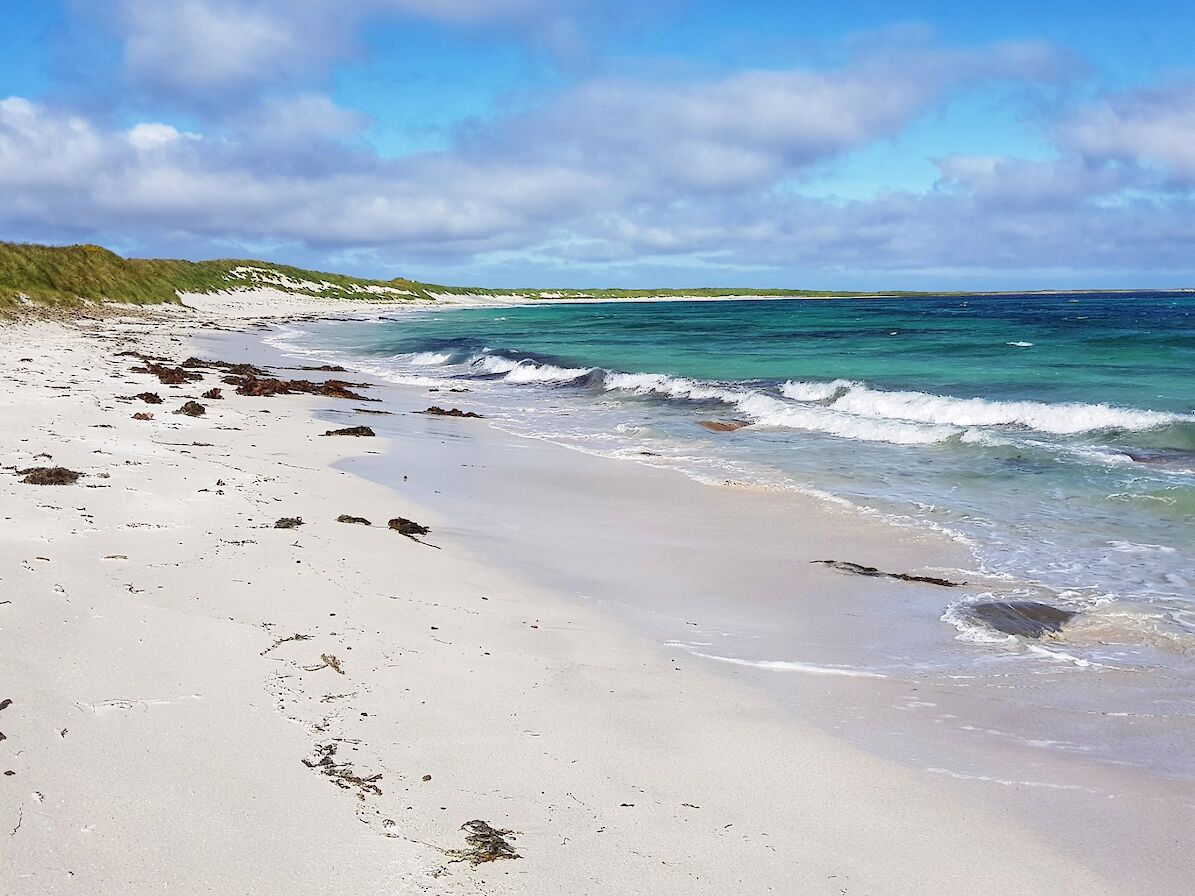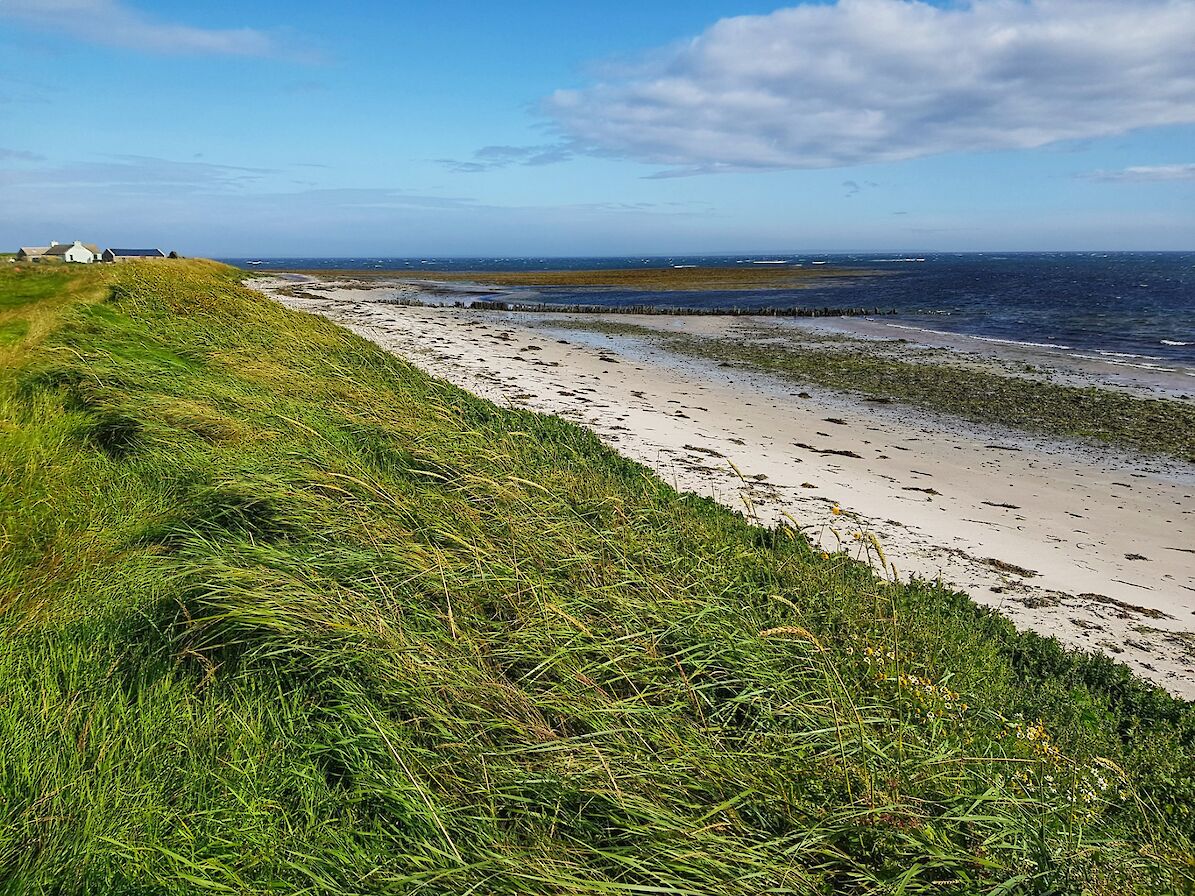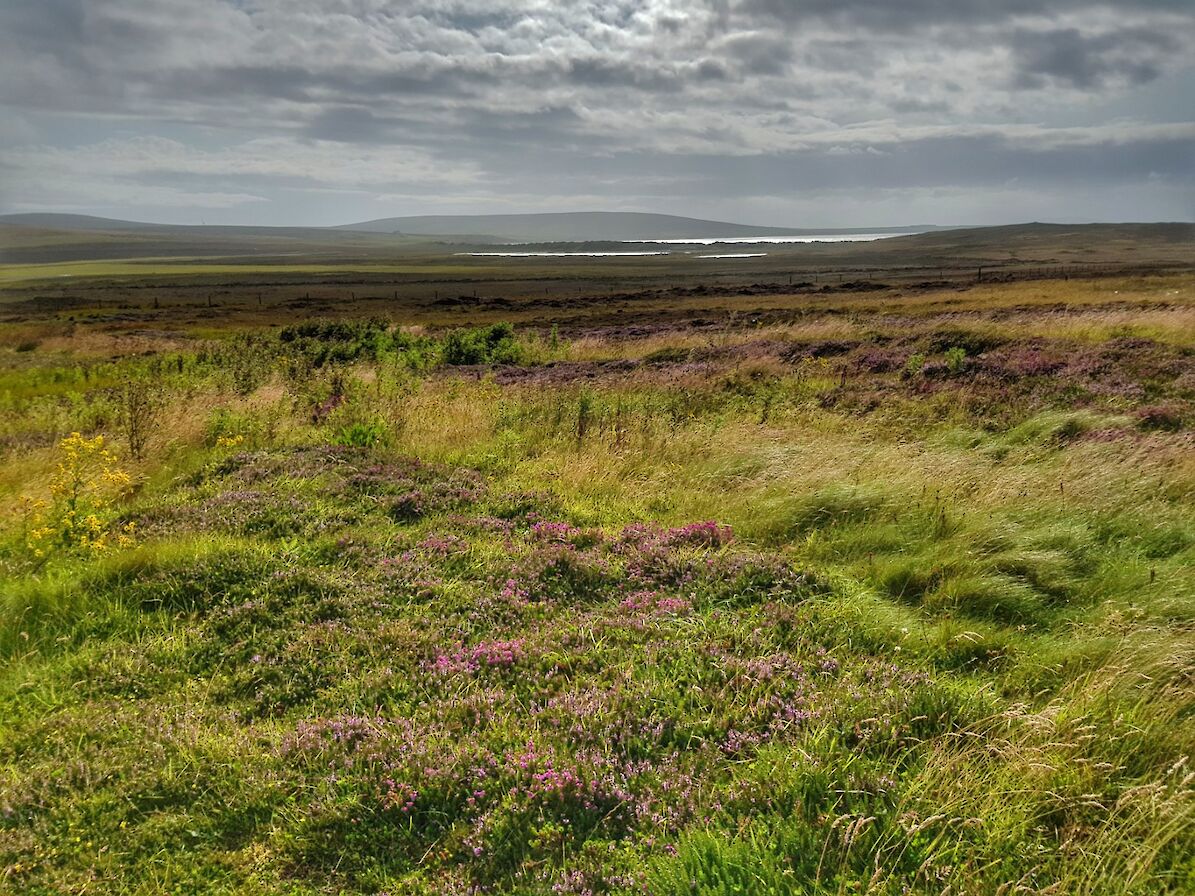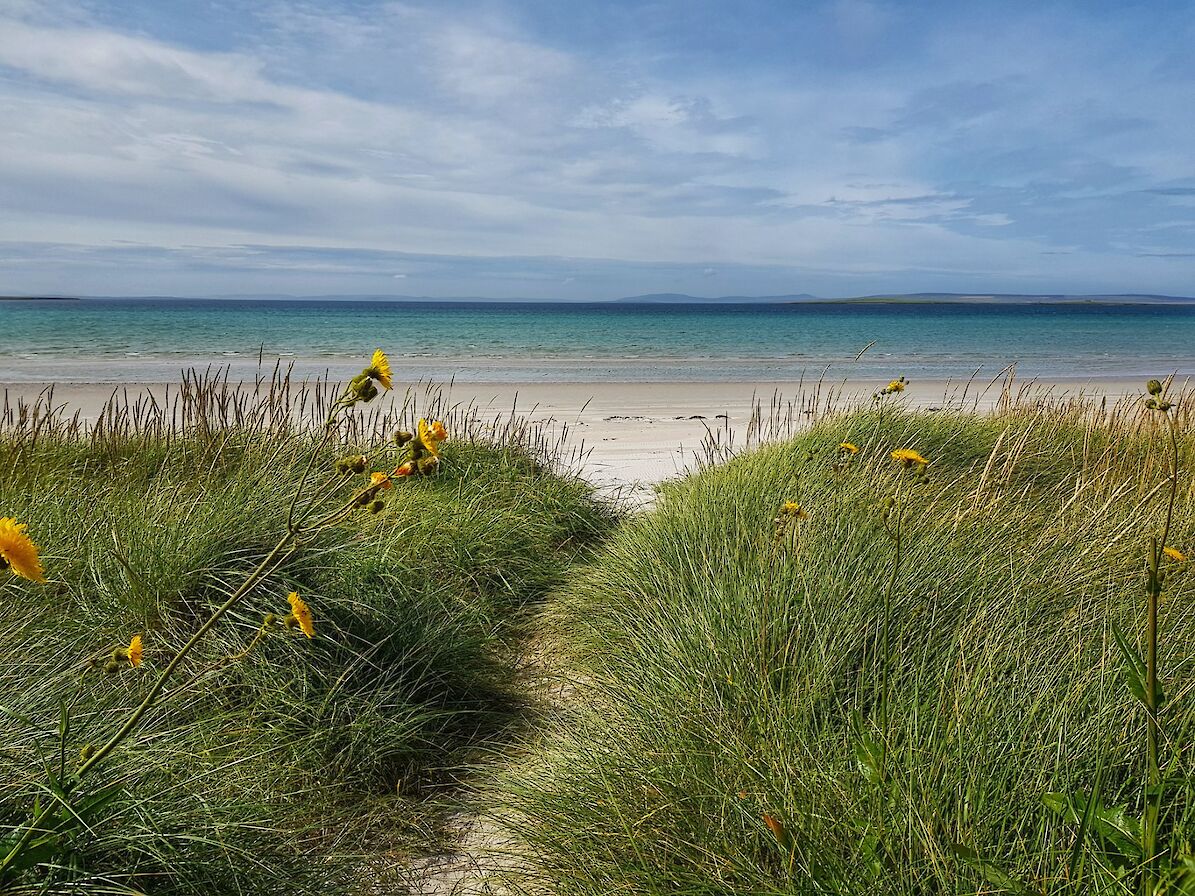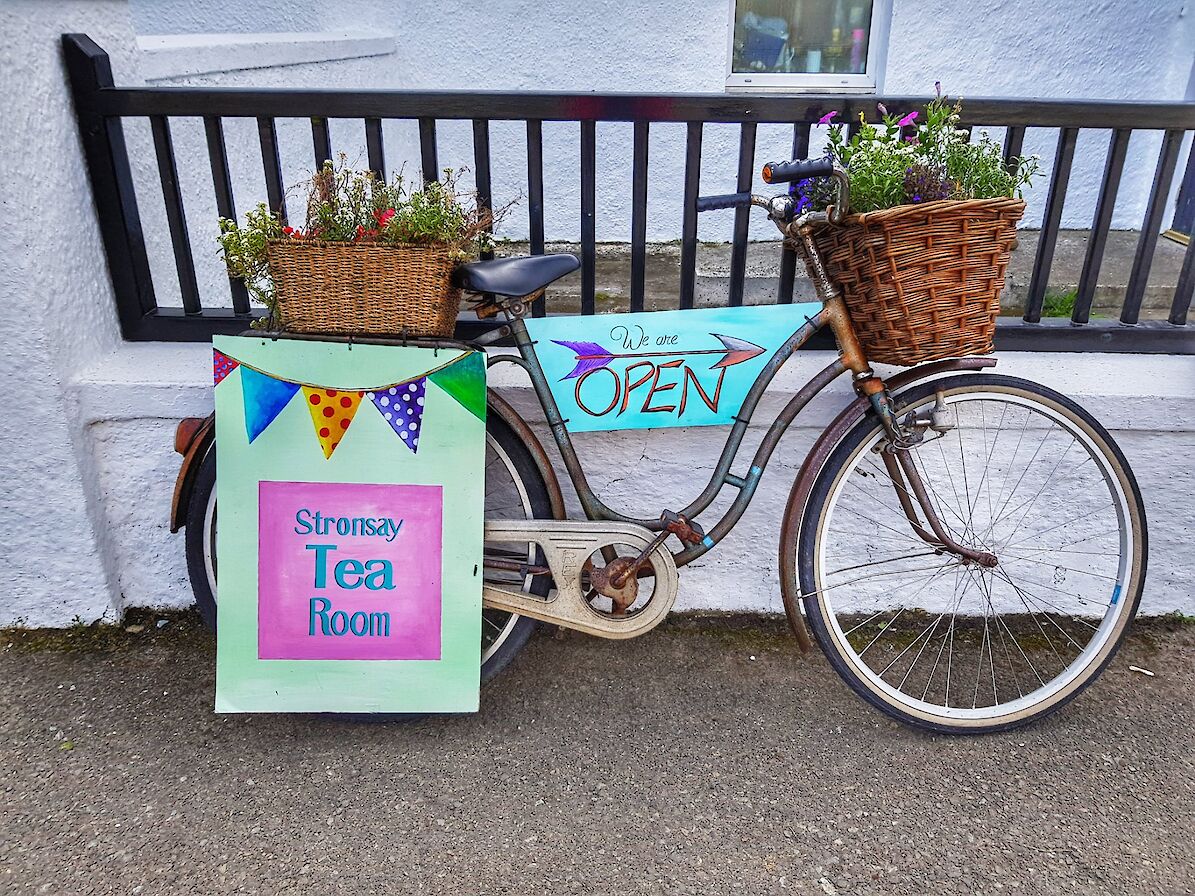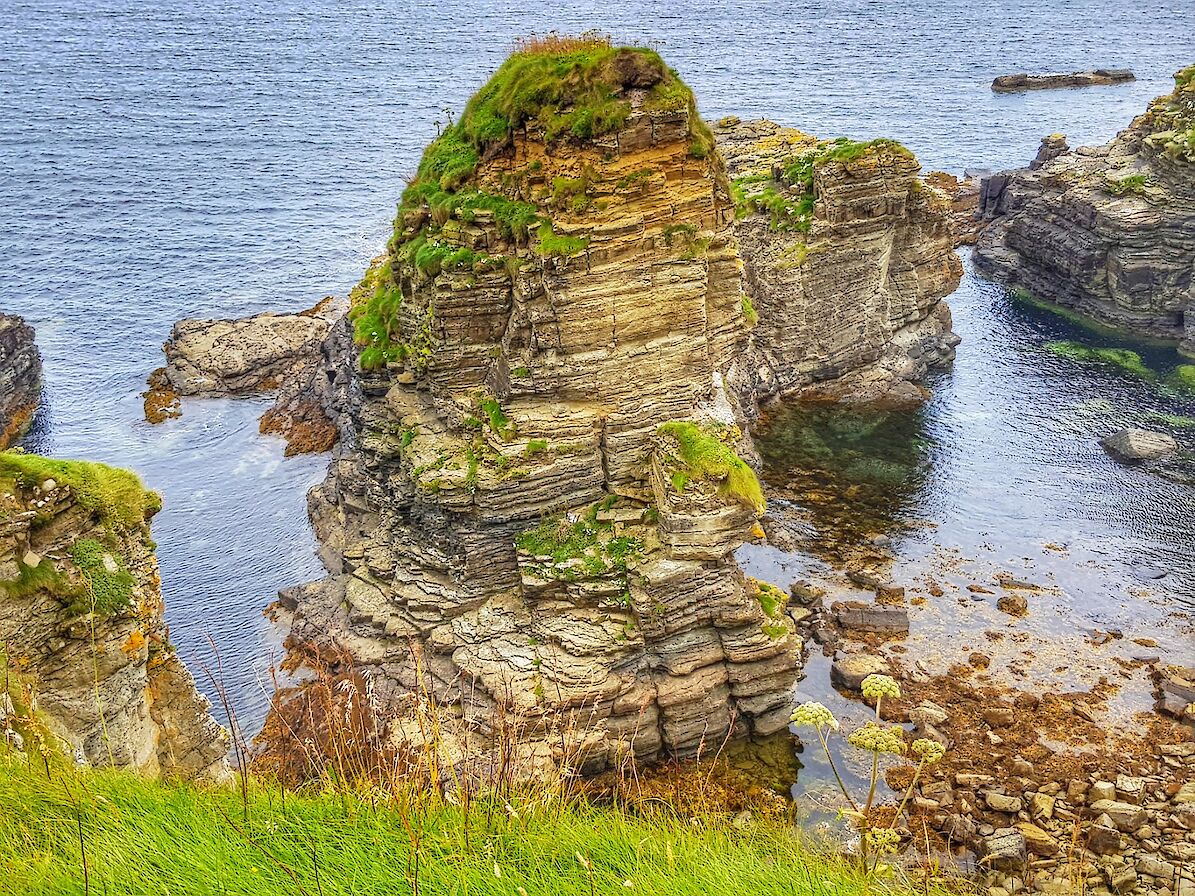Pedalling along at a leisurely speed, we roll rhythmically past lush green pastures, with the occasional curious herd of cows stopping mid munch to study our progress.
The long, quiet road stretches out towards the uncluttered horizon, with the promise of a picnic lunch under warm blue skies at the end of our journey.
I am happily embracing the slower pace of Sanday time.
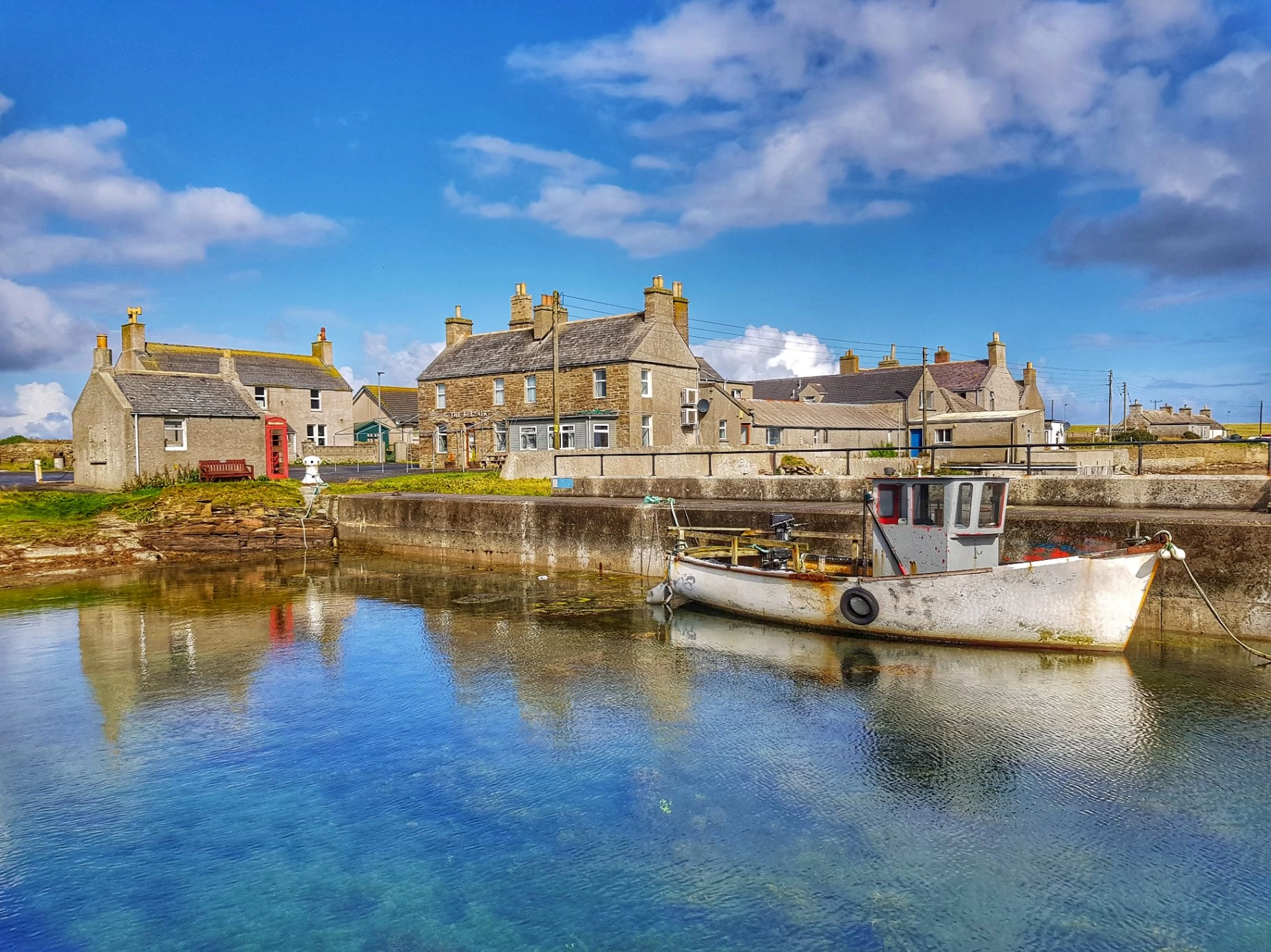
Myself, my husband and our fast but typically lazy lurcher, are in the first of the trio of neighbouring Orkney islands that we plan to visit in a week. Our arrival day in Sanday sees us cycle five miles from the attractive Lady Village to Whitemill Bay, armed with picnic supplies from the community store - one of two extremely well-stocked shops on the island. We meet the occasional car and, without fail, are greeted with some of the most enthusiastic island waving I've encountered...even R2-D2 and C-3PO have adopted the native welcome.

Whitemill Bay turns out to be a utopia of clear turquoise water fringed by a seemingly never-ending stretch of white sand. Sanday has earned its name thanks to a higher than average number of beautiful beaches like this. The island is also famed for its abundance of archaeology and we discover more about its long history at the heritage centre. A little kitchen with a notice inviting visitors to help themselves to tea and coffee is a small gesture but makes us feel hugely welcome.
Over the following couple of days, we also visit the settlement of Kettletoft, stopping at one of the two hotel pubs where we chat with some locals. The Craft Hub next door offers the opportunity to buy local handmade goods. We head north east and at low tide we venture barefoot across the tidal causeway to the lighthouse at Start Point. The sweetie-like black and white stripes are a unique design among Scottish lighthouses. Mainly we just enjoy the opportunity to switch off and relax.

From what I can see, Sanday appears to be a flourishing community compared to many other small Scottish islands. The local development trust has an ethos of creating a quality of life for the 550 residents that is second to none. If they are as happy as their infectious waving indicates, their plan seems to be working.
Eday
On our third day we depart for the 20-minute crossing to Eday, a much more compact island than Sanday. On the first evening we easily cover the six miles from the ferry terminal to the road end in the north. The route takes us through the heart of the island, past the local shop, health centre and heritage museum. We stop briefly to survey the small runway of London Airport which brings amusement to many visitors. It is polar opposite to any airport you will ever find in the British capital.

Despite the close proximity to Sanday, I am fascinated by the hugely different appearance of Eday. Purple heather-clad moors cover much of the island and when the sunny weather breaks the following day, I can't help but think the sparse landscape suits the wet and windswept conditions. It feels as if we have landed at the edge of the world.
Wrapped in waterproofs we brave the elements and head off on foot to explore the long established Eday Heritage Walk. The trail heads out towards the dramatic sea cliffs at Red Head in the north and takes in a host of thought-provoking archaeological sites along the way. The walk starts at the towering Stone of Setter, at 4.5m high it is the tallest single standing stone in Orkney. As we make our way past the remains of numerous prehistoric ruins, my imagination runs wild thinking about the people who once inhabited these desolate moors.

With the stubborn downpour showing no sign of letting up we decide to cut our ramble short at the Vinquoy Chambered Tomb. We crawl along the small entrance passage of the Neolithic burial mound to the main chamber and enjoy temporary respite from the weather. Later we seek a lengthier refuge in the heritage centre where we discover a hub of locals exchanging their news.
That evening we depart for the 35-minute sailing to Stronsay. Our day and a half in Eday seems all too brief. It is one of those understated islands that makes you work a bit harder to unearth its treasures and I leave feeling pretty sure that there is much more to discover.
Stronsay
I can immediately see a lot of parallels between Stronsay and Sanday. Former busy herring ports, green agricultural land, pretty white beaches and local craft trails are obvious similarities. However, there are differences too. While Sanday felt naturally wilder, Stronsay feels a bit more manicured, although it does have a much more dramatic coastline and that is where we headed first. For those without transport, Stronsay offers free bike hire from the village shop and the island is ideal for cycling.
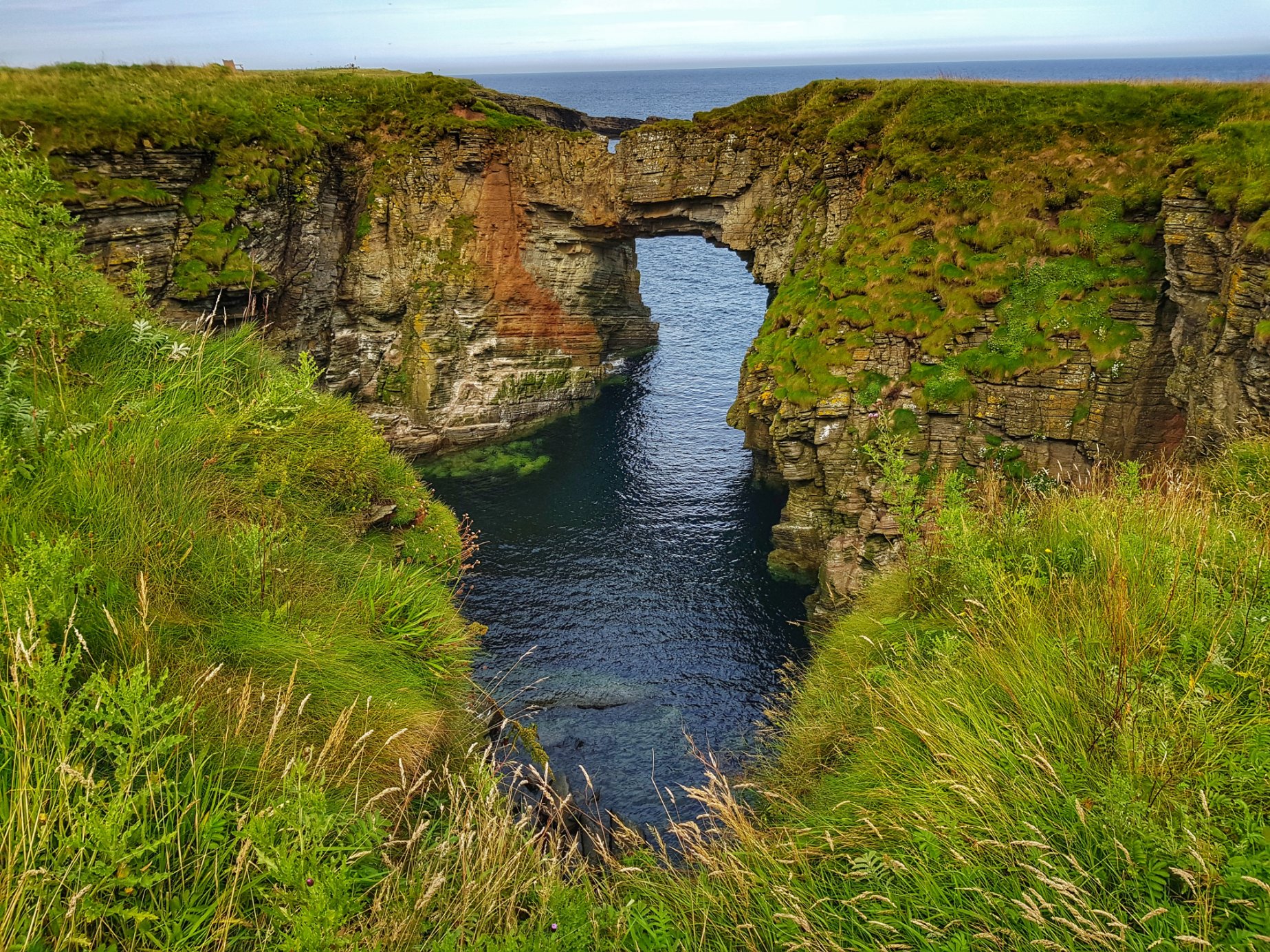
The cliff walk to the Vat of Kirbister is a popular one with visitors. We stop for an essential photo of the striking sea arch before continuing along the coast, passing geos and craggy stacks covered in sea birds. One of the stacks is known as Tam's Castle and is reputed to have once housed a hermitage on the summit. The blustery cliff walk blows away any remaining cobwebs and yet again I am in awe of the diversity of scenery among the island neighbours I've explored this past week.
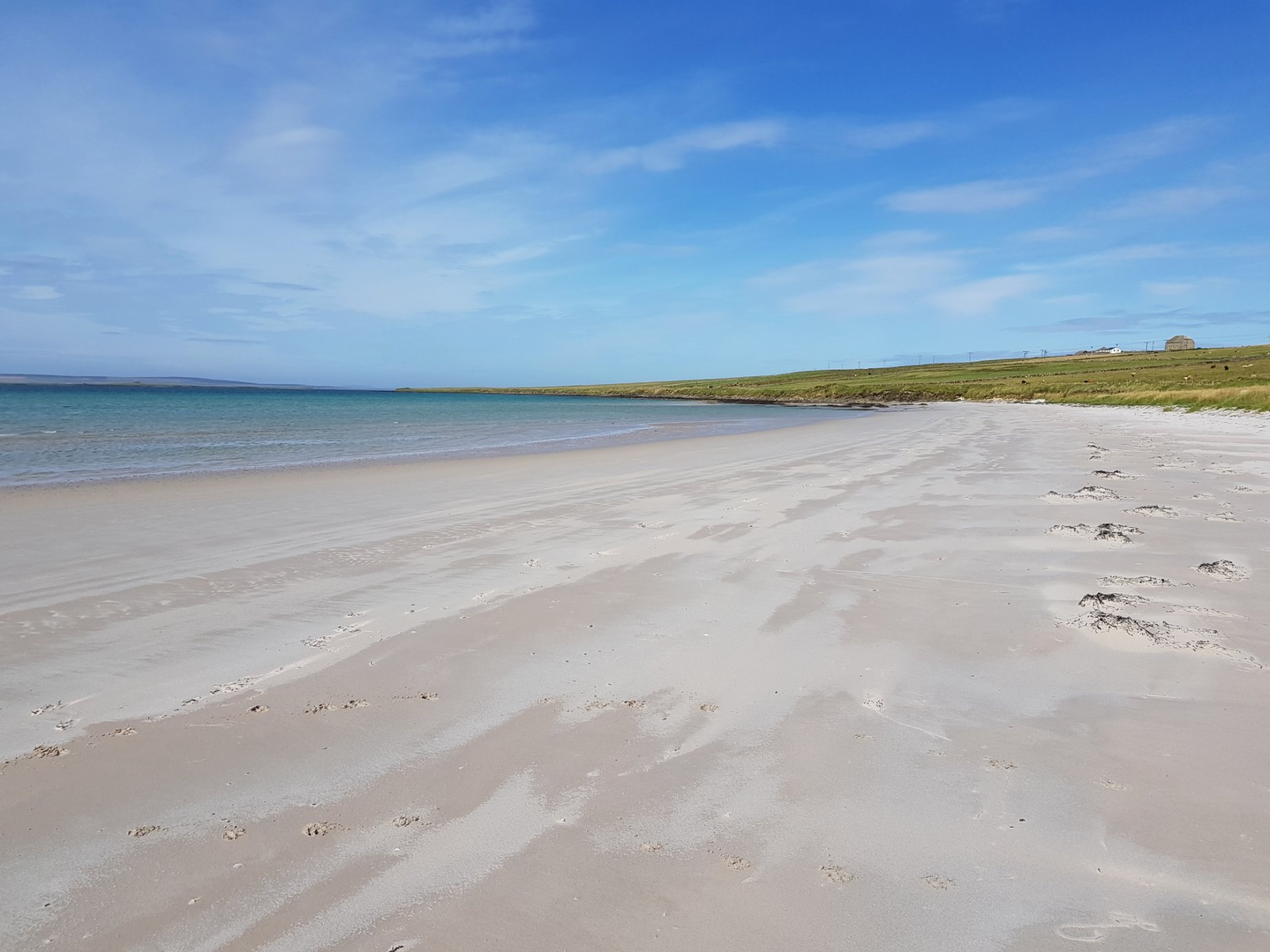
The following day we indulge in some beachcombing on Stronsay's shell strewn sands before taking in the vistas from St John’s Hill viewpoint. From here we can spot many of the other northern islands including Sanday, Eday and the nearby Papa Stronsay which is occupied by Transalpine Redemptorist monks.
All too quickly our island-hopping journey is drawing to a close. We relax in the bar of the Stronsay Hotel and reminisce about our previous week's adventures over coffee as we wait for our final ferry back to Kirkwall.
With many more islands still to visit, I wonder if it is too soon to start planning my next Orkney adventure...
Find out how you can get around Orkney and start planning your own island adventure.
Susanne Arbuckle hosts the Adventures around Scotland blog - visit her website for more travel ideas and inspiration in Orkney and further afield across Scotland.
The Digital Orkney project has been part financed by the Scottish Government and the European Community Orkney LEADER 2014-2020
